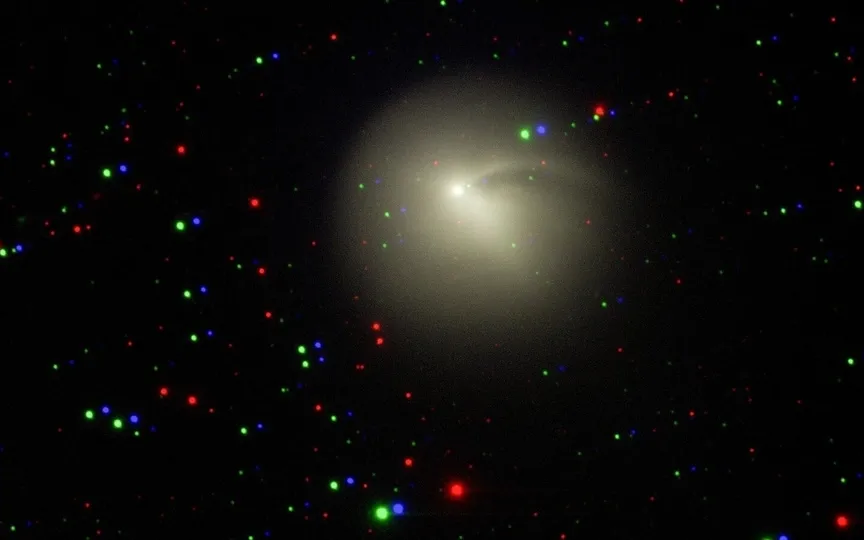Glimpse the Devil Comet’s Splendour with the Indian Himalayan Chandra Telescope!
Astronomers at the Indian Institute of Astrophysics (IIA) have captured an awe-inspiring image of Comet P12/Pons-Brooks, also known as Devil Comet, using the Himalayan Chandra Telescope (HCT) at the Indian Astronomical Observatory in Hanle, Ladakh. This celestial object, often called the ‘Devil Comet’ or compared to the iconic ‘Millennium Falcon’ due to its unique appearance, was first discovered in 1812 and completes an orbit around the Sun every 71 years. Recent observations have shown an increase in its activity, with multiple gas and dust outbursts that have significantly increased its brightness.
The captured image is a combination of individual exposures using three different color filters. ReturnByte.com reports that the comet’s rapid movement across the sky causes the stars to shift with each exposure.
Central to the image from the Chandra telescope in the Himalayas in India is an arc of light representing the comet’s coma-like eruption, followed by a darker band, the shadow of the comet’s nucleus cast on the surrounding gas. The comet’s vast atmosphere forms a spherical halo with an impressive diameter of 350,000 kilometers, highlighting the dynamic and volatile nature of these ancient celestial travelers. The comet itself is actually over 11 miles across.
An astronomical insight
IIA astronomer Margarita Safonova highlighted the comet’s increased activity since July, which has been marked by four major eruptions, each releasing billions of kilograms of material and increasing the comet’s brightness by nearly a hundredfold.
The most recent burst of activity on November 14 is believed to have been caused by solar heat, which caused underground gas to erupt through the icy surface. As Comet P12/Pons-Brooks prepares for its closest approach to the Sun on April 21, 2024 and its closest encounter with Earth on June 2, 2024, it promises to provide a spectacular celestial spectacle. At its closest, it is only 1.5 times the distance between Earth and the Sun, and is possibly visible with the naked eye or at least with binoculars or small telescopes.
IIA Chief of Mission Niruj Mohan Ramanujam emphasized the universal interest in comets and the institute’s commitment to documenting this particular comet’s journey for public viewing.




